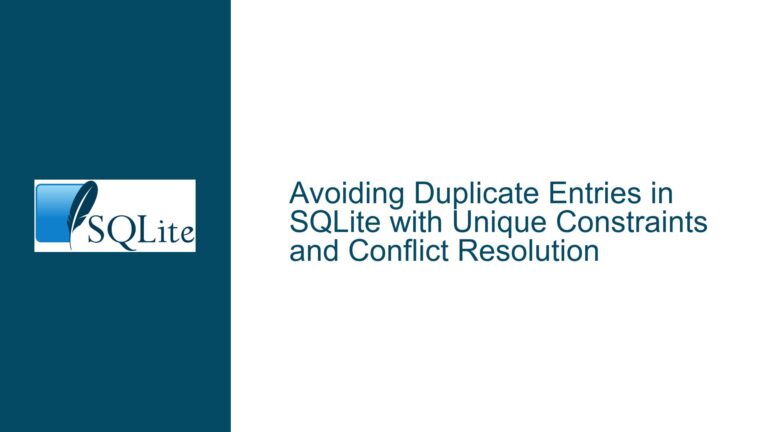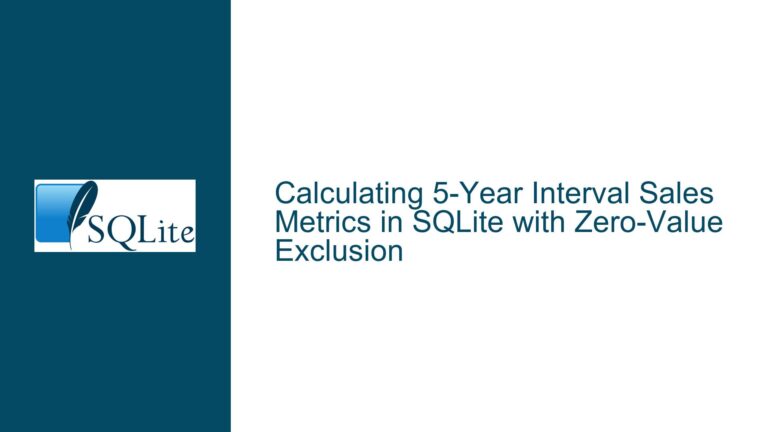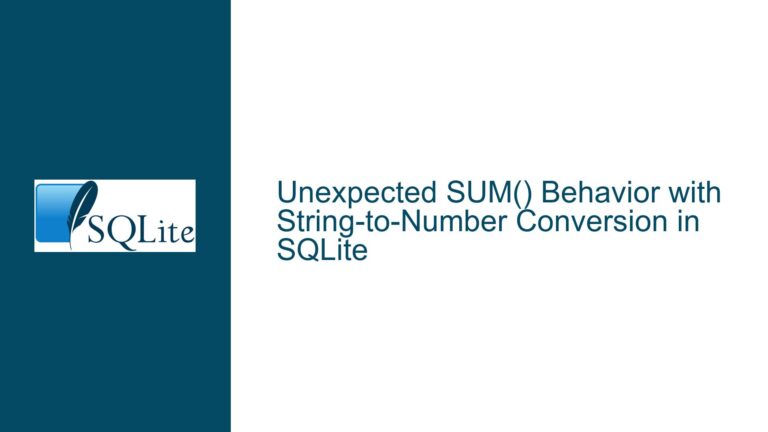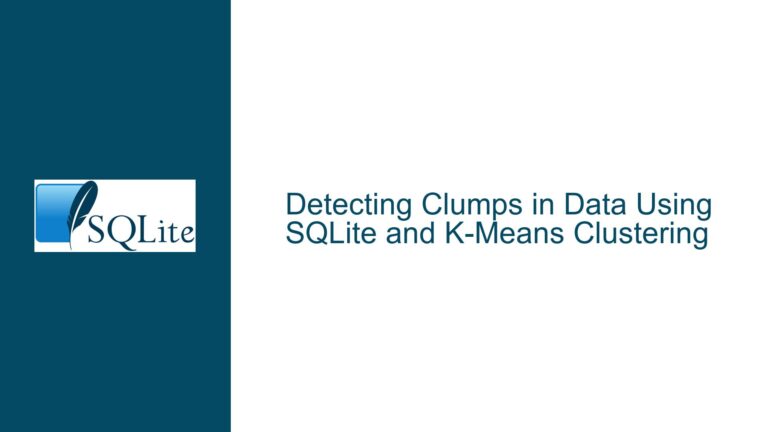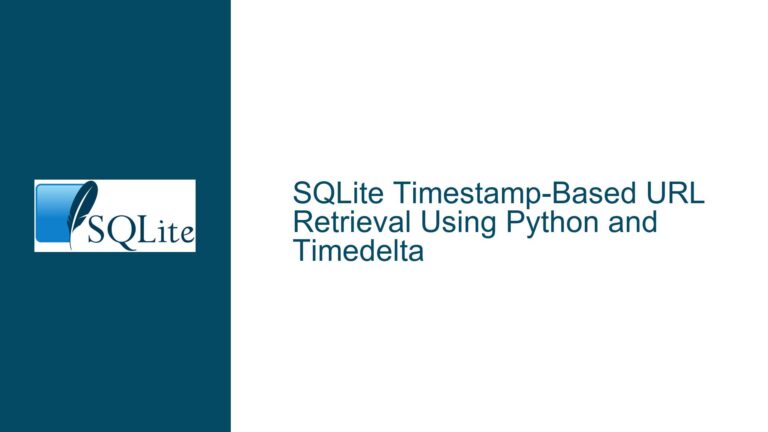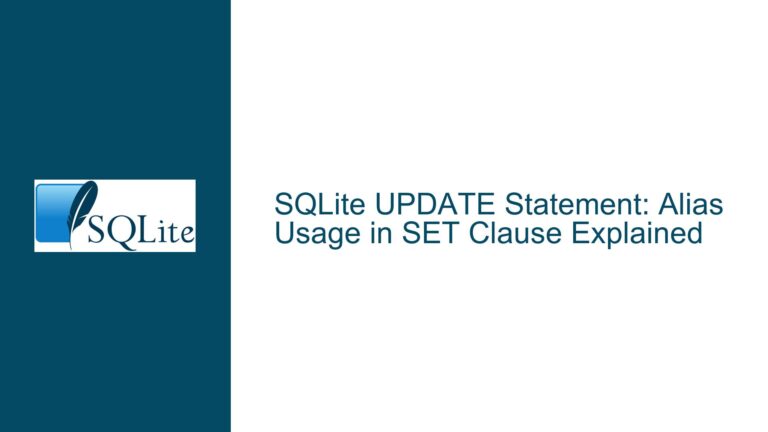Avoiding Duplicate Entries in SQLite with Unique Constraints and Conflict Resolution
SQLite Duplicate Entries Due to Missing Unique Constraints When working with SQLite, one common issue that arises is the unintentional insertion of duplicate entries into a table. This problem often occurs when the table schema does not enforce uniqueness on a column or set of columns that should inherently be unique. In the context of…
